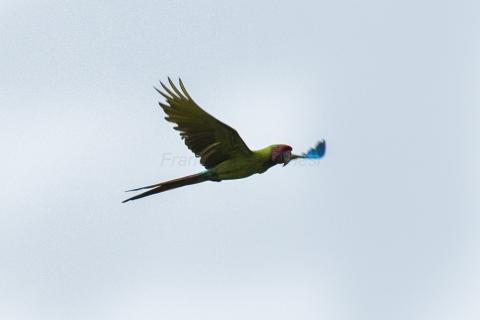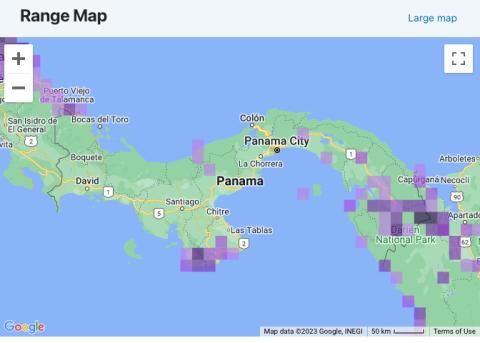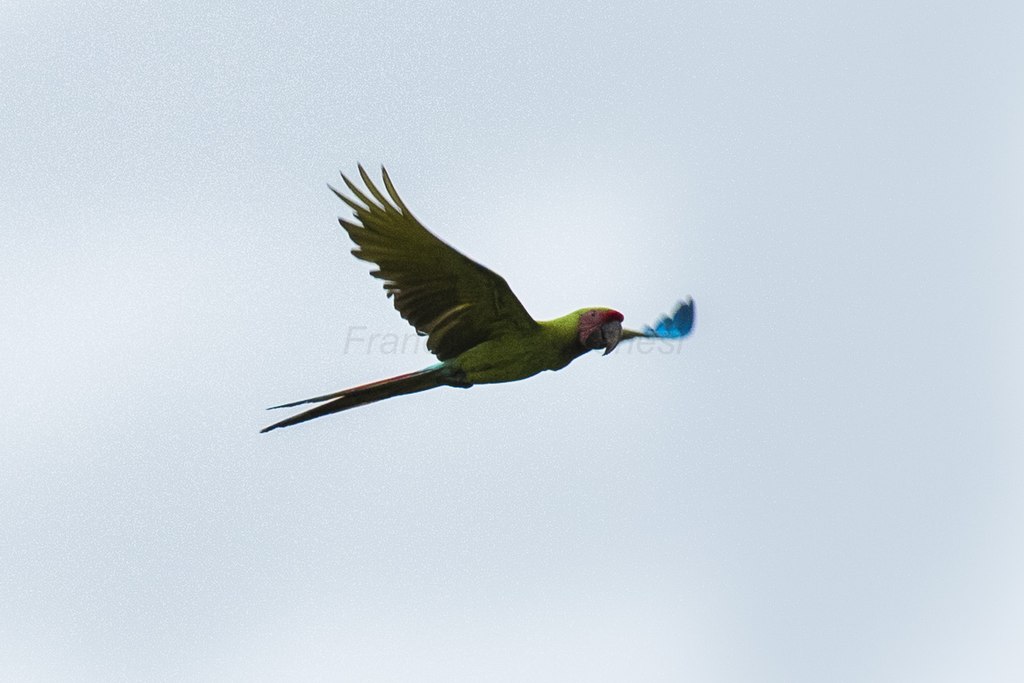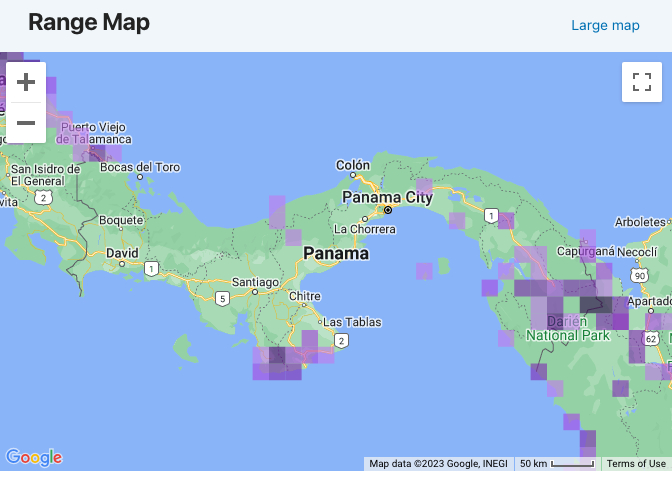Ara ambiguus






Formerly known as Ara ambigua , binomial name change in 2004 to Ara ambiguus.
Subspecies : Ara ambiguus ssp. ambiguus (Nominate subspecies) , Ara ambiguus ssp. guayaquilensis
A. ambiguus ssp. ambiguus : Honduras,Nicaragua,Costa Rica,Panama and Colombia.
A.ambiguus ssp. guayaquilensis : Ecuador.
In Panama it is common in some areas on the Caribbean slope and in parts of Darien National Park such as the famous Cana birdwatching site and across the Alto de Nique mountain and the adjacent border with Colombia. It is also found in the mountains of the Serranía de Majé near Panama City and the southern Cerro Hoya mountains.
(Attribution: Wikipedia)
Great green macaws are the largest parrots in their natural range, the second heaviest macaw species (although they are relatively shorter tailed than other large macaws such as the greenwing macaws and are thus somewhat shorter), and the third heaviest parrot species in the world. This species averages 85–90 cm (33.5–35.5 in) in length and 1.3 kg (2.9 lb) in weight.They are mainly green and have a reddish forehead and pale blue lower back, rump and upper tail feathers. The tail is brownish-red tipped with very pale blue. The bare facial skin is patterned with lines of small dark feathers, which are reddish in older and female parrots. Juveniles have grey-coloured eyes instead of black, are duller in colour and have shorter tails which are tipped in yellow.
The main morphological distinction with the subspecies guayaquilensis is that this bird has a smaller, narrower bill.
The great green macaw appears superficially similar to, and may easily be confused with, the military where their ranges overlap.
In Costa Rica this species is found north of the continental divide, in the rainforest of the Atlantic basin. In these habitats, it strongly prefers Dipteryx panamensis (almendro tree) as principal nesting tree. This tree exhibits asynchronous flowering and fruiting, which may influence local movement. However in Panama this species is found on both sides of the continental divide. There are some flocks living in the Azuero Peninsula , which faces the Pacific ocean. This area tends to have somewhat less rainfall , reflecting more of a dry tropical forest ecosystem. In this setting , the macaws like to nest in gigantic cuipo trees (Cavanillesia plantanifolia) , as almendro trees are less common here. They also pursue buds , seedpods and flowers from various other trees , including Brazilian fern tree (Schizolobium parahyba), Hog plum (Spondias mombin), Kapok (Ceiba pentandra) and the sandbox ceiba (Hura crepitans). Observations in Costa Rica relating to feeding behaviour is that at least 38 species of plants are used as food . Reproduction of A. ambiguus living in the Azuero peninsula has been observed towards the end of the dry season , between December and May. The trees used are generally quite tall, on average 32.5 m tall, but reaching to 50 m, and with a diameter at chest height of 75 to 166 cm. The nest cavity has no specific orientation. The cavities are usually found high up in the trunk, near the crown of the tree. Such cavities are often formed at places where a large branch breaking off the trunk in the crown of tree.
The female lays a clutch of 2-3 eggs and incubates them for 26 days.A single adult (possibly the female) incubates the eggs while the other forages for food and feeds the incubating bird. Both parents participate in rearing the young. The nest contains chicks from February to April in Costa Rica, with the young usually being completely feathered by the end of April, rarely by mid-June. Chicks hatch weighing 23g, can fly after 12–13 weeks, and are weaned after 18–20 weeks when they weigh over 900g.In the wild, generally two young are produced per nest. Chicks eat the same things as the parents. This species has high reproductive success (60% of young survive). After fledging juveniles stay with the parents as a family unit for a significant amount of time, only separating gradually from them. Juvenile birds, at least in captivity, are mature after 5 years, and sexually mature after 6 or 7 years. This species can live to 50–60, to a maximum of 70, years of age.